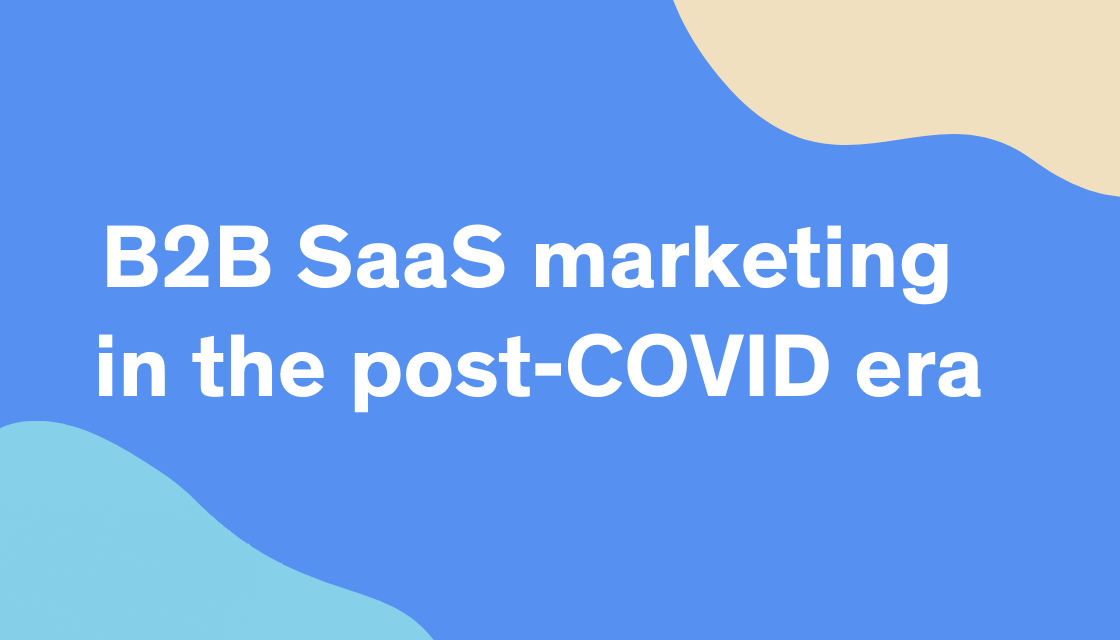The emergence of the pandemic, uncertainty around its duration, and the impact on the economy pose important questions around new operating conditions of a SaaS business. Marketing is probably the first function in any organization to feel the impact of a macroeconomic event because it drives the top of funnel and is a communication channel for a company to the outside world. Thus it is important for marketing leaders to react faster and collaborate with the rest of the company. Over the past few weeks I have had the opportunity to reflect and brainstorm with heads of marketing from within our portfolio and outside. Recently, we also sat down for an insightful chat with Denise Persson, CMO at Snowflake and Bill Macaitis, former CMO at Slack and Zendesk. Denise and Bill are two of the best marketers in the enterprise tech world today and both have lived through and emerged stronger from the 2008 recession. Below is an attempt to summarize some of the best practices and strategies that are working well:
Re-prioritize Spend. Every company (with a few selective exceptions) is going through a painstaking exercise of rationalizing operational expenses and orienting themselves towards more sustainable growth in the face of lower than expected revenues. Marketers have to be empathetic to the broader company goals and give up on budget previously planned for the year. In most companies this number is anywhere between 30-50% of the original budget. Some of the spend optimizations are no-brainers. E.g. Tradeshow budgets are potentially easier to cut. Other decisions may be more difficult. E.g. there needs to be a thorough review of the productivity levels of various channels and prioritization of the ones that are working best.
Rethink Branding. In these unprecedented times, the values that a company projects will likely define its brand for years to come even after the economy has recovered. So it is all the more important to be very deliberate and thoughtful about your branding and messaging. Are you being empathetic enough to your customers? Are you lending a helping hand? In what ways could your customers take advantage of your technology to navigate the current crisis? Thinking through and producing such use cases is an excellent opportunity for content marketing.
In challenging times, most companies look to save costs and protect their business. Could your product optimize spend and provide better manageability? If yes, weave that into the messaging. A great case in point is TripActions. While before the crisis, their tagline\messaging was all about choice of inventory and personalization, post-Covid it is about controlling costs and protecting employees. Very thoughtful marketing.
Redeploy resources. All of us have had to adapt to getting work done in the post-pandemic era. However, some of the work is no longer relevant. For example, tradeshows used to be an important channel of lead generation but are no longer an option (at least in the near term). Marketers need to come up with a holistic strategy to replace the gap in lead-gen from these tradeshows. In early data, the webinar seems to be a channel that is gaining prominence. It would make sense to experiment with this channel for your product and customer base and create a strategy around it. You could even offer virtual hands on labs in the form of webinars if it works with your prospects. To fuel this strategy you would likely need a dedicated base of people. One idea would be to retrain and redeploy the field marketers, who are no longer deployed at tradeshows. A win-win for everyone.
Retool your product. Here is an opportunity for marketers to go above and beyond traditional marketing and increase the scope of influence on the product. Slack has demonstrated without a doubt that your product can be your best marketing tool. Customer delight in the product works to reduce customer acquisition cost and makes the business very attractive in the long run. A downturn is a good time to invest in these features and functionality. It is a great opportunity to collaborate with your product team to understand customer engagement and influence product development that aligns with marketing goals.
Retain Customers. A macroeconomic crisis situation like the current one makes it harder to find new customers. The beauty of the recurring revenue model is that your existing customer base is as valuable as getting a new customer but only if you can retain them. As you tweak messaging for prospective customers, it might be equally helpful for existing customers. Having appropriate tone and messaging could prevent regrettable churn and have a large impact on the company’s top line for the year. Offer help and team up with your customer success team. Together you can form a superhero combo that saves the day for your company!
